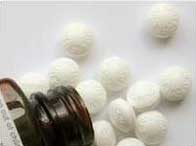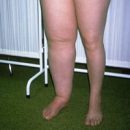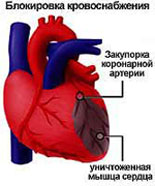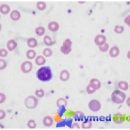«It is not necessary to treat a disease, but a person»! Modern approach to the treatment of atheroscleroid preperses the elimination of risk factors, the correct lifestyle, treatment of background diseases and, finally, the complex treatment of the disease itself. Learn more, stop aging!
Content
In view of the fact that atherosclerosis is the leading cause of such severe diseases as ischemic heart disease, myocardial infarction, brain stroke, etc. Prevention and treatment of atherosclerosis need to pay due attention. A modern approach to the treatment and prevention of atherosclerosis provides first of all to eliminate the risk factors atherosclerosis, which largely reduces the risk of complications and fatal outcomes.
Treatment of atherosclerosis complex and includes a number of measures to correct the lifestyle of the patient, changing food style, rejection of bad habits, as well as drug treatment, promoting the restoration of normal metabolism of the body.
Treatment of atherosclerosis. Is it possible to treat atherosclerosis
As we have already spoken in other articles on the problem of atherosclerosis, this disease can be viewed as one of the manifestations of the process of aging the body. We also noticed that, this statement is true only by half, since at the same time atherosclerosis is a completely defined disease, which is amenable to prevention and treatment. Indeed, atherosclerosis can be treated!
Modern clinical studies show that every risk factors atherosclerosis (obesity, smoking, lack of movement, hypertension) increases the risk of atherosclerosis and its complications by 2 times, and the presence of one patient several risk factors increases its chances of getting coronary heart disease, infarction or strokes 5 times! From here, the conclusion naturally suggests: elimination of atherosclerosis risk factors can slow down the development of the disease and reduce the risk of deadly complications
Non-drug treatment atherosclerosis
 The essence of non-drug treatment is reduced to the elimination of risk factors and correction of the patient's lifestyle with atherosclerosis. In this sense, the struggle against the variable risk factors of atherosclerosis is of particular importance:
The essence of non-drug treatment is reduced to the elimination of risk factors and correction of the patient's lifestyle with atherosclerosis. In this sense, the struggle against the variable risk factors of atherosclerosis is of particular importance:
-
Proper nutrition, reducing the consumption of high cholesterol products: compliance with a diet with low content of animal fats, consumption of products rich in unsaturated fatty acids, avoiding overeating;
-
Combating obesity: maintaining body weight as close as possible «Perfect weight» significantly reduces the risk of developing diabetes, hypertension, ischemic heart disease;
-
Failure to smoking and alcohol abuse: an important method of prevention of atherosclerosis. Alcohol and tobacco negatively affect the state of the vessels and the work of the heart;
-
Improving physical activity: helps to improve the work of the heart and the supply of the heart muscle with oxygen, helps reduce weight, prevents the development of hypertension and diabetes;
-
Elimination of stressful situations and overwork: helps to adjust the activities of nervous and endocrine systems and establish normal metabolism of the body.
In general, the prevention and treatment of atherosclerosis do not need to be observed any «special» mode. It is enough to keep a healthy lifestyle. As studies show, eliminating one risk factor atherosclerosis reduces the risk of complications by double. The elimination of all factors significantly improves disease forecast.
Medicate treatment atherosclerosis
 The main purpose of the drug treatment of atherosclerosis is to reduce the concentration of cholesterol in the blood and the recovery of fats in the body. The transition from non-drug-free to drug treatment is advisable in cases where, reduce cholesterol levels in the blood fails, neither by correction of the lifestyle, nor by diet. At the moment, the following groups of preparations are used in the treatment of atherosclerosis: statins, fibrates, fatty acids, nicotinic acid and its derivatives.
The main purpose of the drug treatment of atherosclerosis is to reduce the concentration of cholesterol in the blood and the recovery of fats in the body. The transition from non-drug-free to drug treatment is advisable in cases where, reduce cholesterol levels in the blood fails, neither by correction of the lifestyle, nor by diet. At the moment, the following groups of preparations are used in the treatment of atherosclerosis: statins, fibrates, fatty acids, nicotinic acid and its derivatives.
Medical treatment of atherosclerosis is carried out under the control of the attending physician. Independent use of the preparations described above is categorically prohibited.
Statins The statin group includes such drugs as Lovastatin, Simvastatin.
The mechanism of action of statins is to brake the synthesis of cholesterol in the cells of the body and a decrease in blood cholesterol concentration. Statins also stabilize an atherosclerotic plaque and prevent complications of complications associated with its destruction.
Side reactions of statins This: headaches, dizziness, diarrhea, constipation, nausea, bloating, cramps, itching skin, sleep disorders. The frequency of the occurrence of side effects from the treatment of statins, however, is minimal when complying with the correct dosage mode.
Contraindications: Pregnancy and breastfeeding, acute liver diseases, injuries, surgical operations, infections, severe endocrine diseases, increased sensitivity to medicine.
Fibrats The group of fibrats includes hemfibrosyl, fenofibrate, ciprofibrate.
Fibrats act by accelerating the work of the enzymes of splitting blood fats, which in turn reduces the concentration of fats (including cholesterol) in the blood.
The side reactions when using fibrats are the same as in the statins described above. In rare cases, the use of fibrate can cause anemia.
Contraindications: pregnancy and breastfeeding, liver disease and gallbladder, renal failure, increased sensitivity to the drug.
Sequestrs of bile acids This group of drugs include kolistramine, a bears.
The sequesters of bile acids prevent the absorption of bile acids from the gastrointestinal tract, which in turn reduces blood cholesterol. Also, the sequesters of bile acids prevent the suction of cholesterol from food. Medicines themselves from this group are not absorbed into the blood and therefore is well tolerated by most patients.
Side effects: nausea, diarrhea, constipation, aggravation of ulcerative disease, aggravation of hemorrhoids, etc.
Contraindications: pregnancy and breastfeeding, biliary tract diseases, increased sensitivity to drugs.
Nicotinic acid and its derivatives Nicotinic acid is known as vitamin RR.
The mechanism of action of nicotine acid is to accelerate the conversion of body fat, which leads to a decrease in their blood concentration.
Side Effects: Heat Rays, Facial Redness and Top Parts, Itching Skin, Blood Glucose level, aggravation of ulcerative disease and gastritis, heart rate disorders, stones formation in biliary tract.
Contraindications: Heavy forms of hypertension, ulcerative disease, pregnancy and breastfeeding, increased sensitivity to the drug, gout.
Treatment of concomitant diseases
Often patients with atherosclerosis suffer from other concomitant diseases that increase the risk of developing atherosclerosis complications. Atherosclerosis in turn takes the flow of these diseases. Therefore, the complex treatment of the patient with atherosclerosis should include the treatment of diabetes mellitus, treatment of arterial hypertension, treatment of obesity.
Surgical treatment atherosclerosis
Surgical methods of treatment of atherosclerosis will be applied in the case of certain damage to the walls of arteries, which violate the blood supply to a certain part of the body and can be eliminated surgically.
Typically, surgical treatment provides for the removal of the affected section of the blood vessel, the removal of blood cloth or the prosthetics of blood vessels. Such treatment methods are used to treat atherosclerotic lesions of the arteries of the lower extremities, the coronary arteries of the heart, the arteries of internal organs.









